Wiscasset
Yet another historic coastal town. In 1605, French explorer Samuel de Champlain is said to have landed at this place known to the local Indians as Wiscasset. He met the Indians and exchanged gifts with them. The first settlement was Frankfort Plantation in 1663 but had to be abandoned during the French & Indian War. Resettlement did not take place until around 1730.and the town was incorporated in 1760 as Pownalborough, named after Massachusetts Governor Thomas Pownall. Situated on the tidal reach of the Sheepscot River, it became a centre for shipbuilding, fishing and timber, growing very quickly until it became the busiest seaport north of Boston. In 1802 the town reverted to its Indian name of Wiscasset but the town was hit hard when the 1807 embargo halted most of the trade with England. Wiscasset never fully recovered from the embargo; it was considered for state capital after Maine became a state in 1820, but lost out to Augusta. The Knox and Lincoln Railroad arrived in 1871 but it was not connected to the main line - passengers had to transfer to a ferry to cross the Kennebec River between Bath and Woolwich. This was not rectified until 1927 when the Carlton bridge was built across the Kennebec River. From 1972 Wiscasset was the home of Maine Yankee, the only nuclear power plant in the state. Closure and decommissioning of the plant in 1996 resulted in major job losses in the town and many people moved away. The town now has a population of around 3,600 people.
Old Jail Museum
The first jail was built in Wiscasset in 1795 but it soon proved to be inadequate, suffering from overcrowding and frequent escapes. The building of a new jail was authorised in 1807 and construction of the jail and keeper’s house took place between 1809 and 1811. The original keeper's house was destroyed by fire, and the present brick house (on the left of the picture) was built in 1837. The jail was in regular use until 1913 and continued to be used as an overflow jail until 1953. In 1955 the property was sold to Lincoln County Historical Society who opened it as a museum and use it as their headquarters. The tour includes two floors of the Old Jail and six rooms of the keeper’s House. The Old Jail Museum is open Saturdays and Sundays from June to Columbus Day.
Musical Wonder House
When we visited Wiscasset in 2013 and took this picture, this was an unusual museum. The house on High Street was built in 1852 as a semi-detached two-family home. It is said to be haunted by a young man in his early 20s, believed to be a former resident from long ago. In 1963 Danilo Konvalinka, Lois Ernst Konvalinka, and Douglas Henderson converted it into a museum housing a collection of antique music boxes and instruments that filled all 32 rooms. The museum was very successful and gained international recognition. In 2014 the it closed abruptly and without explanation. Sadly, the house is now empty and derelict; nobody seems to know who now owns it.
DLU180427
Click on Minimap to navigate
Home > US States > New England > Maine > Mid Coast >
Castle Tucker House
The early history of Castle Tucker is similar to the Nickels-Sortwell House. It also was built in 1807, the year that Jefferson imposed the embargo. This Regency style brick mansion was built by US Congressman Silas Lee and he called it Elm Lawn. Lee invested heavily in shipping and real estate and was badly hit by the downturn. Lee died in 1814 and his wife sold Elm Lawn to settle his debts and built a much smaller house on a parcel of land that she retained. The mansion had a series of owners up to 1856 when it was purchased by local politician Franklin Clark who began to renovate the mansion but ended up in default. In 1858, urged by his father who knew Clark, shipping agent Richard Tucker Jr. purchased the mansion. The 41-year old Tucker moved into the mansion with his teenage wife Mollie and baby daughter. They modified the house and added extravagant Victorian decorations and furnishings. The Tuckers had five children and the mansion soon became known as Castle Tucker. From 1880 Captain Tucker was based mainly in Boston. Molly struggled to meet the costs of running Castle Tucker and for a time took in summer boarders. Captain Tucker died in 1895 and daughter Jennie moved back to the mansion. Mollie died in 1922 but Jennie kept the mansion going until her death in 1964. Her niece, Jane Standen Tucker, then moved to the mansion from California. She restored the house and occasionally opened it to the public. In 1997 she gave the house and its contents to Historic New England. The house is open as an historic house museum Wednesday to Sunday between June and mid October.


To move forwards or backwards through the Maine trail click the arrows above, or select your next destination on the Minimap.
Nickels-Sortwell House
During the boom times many fine mansions were built in Wiscasset. The Federal-style Nickels-Sortwell House was built in 1807 by ship owner and trader Captain William Nickels. 1807 was the year that Jefferson imposed the embargo that seriously damaged the economy of Wiscasset and it ruined Captain Nickels. In 1814 he deeded the mansion to his business partner, Samuel Miller. Miller allowed the Nickels family to live in the mansion but Captain Nickels died the following year leaving only debts. Samuel Miller then turned the house into an inn before selling it to the Turners in 1830. They initially called it Turner’s Tavern but in 1838 they renamed it the Mansion House Hotel. In 1870 Charles Turner inherited the hotel which he closed and left to fall into disrepair, but in 1870 he sold it and it was reborn as the Belle Haven Hotel. In 1895 banker Alvin Sortwell and his family stayed at the Belle Haven and liked it so much that in 1899 they purchased the mansion as their summer home. Although Alvin Sortwell died in 1910, the family continued to use the mansion until Frances Sortwell died in 1956. She gave the house to the Society for the Preservation of New England Antiquities (now Historic New England). Her heirs were given the right to any furniture that they wanted, but they chose to leave it in the house. The house is open as an historic house museum Friday to Sunday between June and mid October.
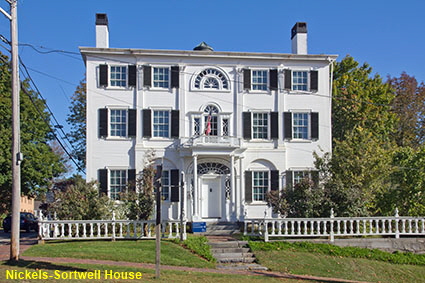
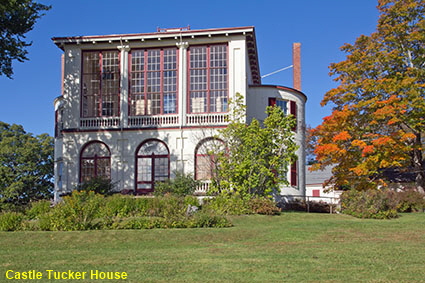
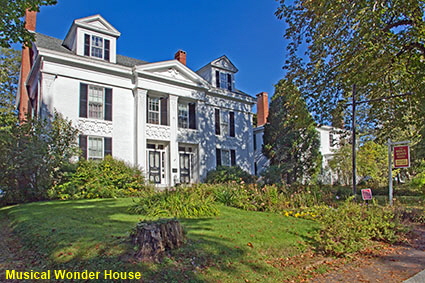
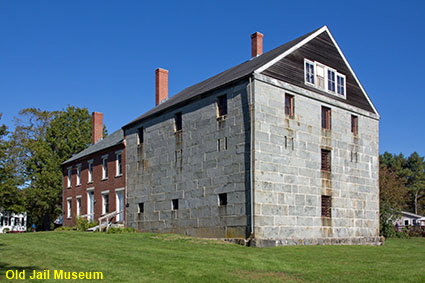
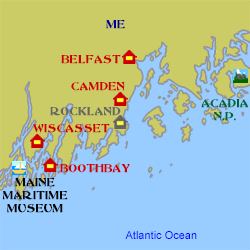

© Mike Elsden 1981 - 2025
The contents of this page may not be reproduced in full or in part without permission